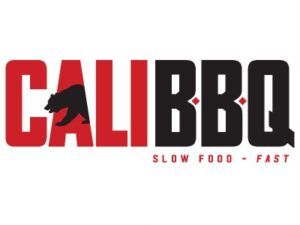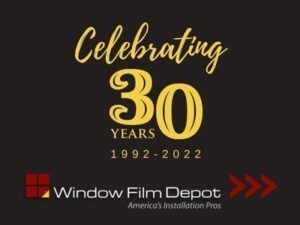
Chat with any colleagues who have recently returned from an industry gathering or conference, and, in addition to the business debriefing, you’ll likely hear anecdotes, restaurant recommendations, and of course the latest insider gossip. In my experience, there’s no substitute for this kind of personal interaction. Face-to-face networking, in such a concentrated way with people who have common interests, remains an incredibly effective, efficient way of communication.
Judging by a report in the June 2017 issue of Trade Show Executive, an increasing number of people share this view. Year-over-year, April 2017 exhibited 2.9 percent growth in nation-wide trade show attendance, and capped a run of four consecutive months of growth.
Especially in the age of digital meeting technologies, this positive trend is encouraging. As people are communicating more electronically—video-conferencing is de rigueur in large organizations, with approximately 450,000 systems installed in the United States, and Skype alone logs eight billion hours of calls each year—it’s obvious that quality, in-person time is viewed as valuable and that the convention industry, especially host cities and facility owners, should appreciate this by keeping their properties in top condition.
A convention center can generate a significant amount of revenue for a municipality. The income isn’t attributable to just the facility rentals, but also the expense-account dollars spent by visitors for dining, entertainment, and shopping.
In 2016, the San Diego Convention Center welcomed 824,000 attendees, who directly spent $658 million in the city; the regional fiscal impact totaled $1.1 billion. Chicago’s 2.6 million-square-foot McCormick Place generates $1.7 billion each year. The Orange County Convention Center brought $2.28 billion to the Orlando community in 2015, while drawing one million visitors to town.

Disrupt or be disrupted
In light of these facts, it’s clear that the meetings industry must make some significant changes if it is to continue to remain relevant. At the big-picture level, a new perspective on the economic relationship between the community and the convention business is emerging.
Cities are promoting not just their facilities and cultural attractions to conference organizers, but also their resources for innovation, often in the tech, research, and education sectors. This far-sighted, inclusive strategy stresses long-term growth for cities and regions, rather than short-term returns. Austin’s South by Southwest (SXSW) is a notable example of this approach.
With minimal expense, the city leveraged its homegrown media and music industries to attract attendees as well as outside sponsors to the conference; the local economic impact of the 2016 event was $325.3 billion. Attendance at SXSW has increased eightfold since its establishment in 2011.
Redefining the destination-city in this way greatly enhances the draw to convention visitors. If they’ve made the financial and scheduling commitment to traveling, conference attendees want to go somewhere interesting. To remain competitive, it’s incumbent upon cities to deliver a holistic experience to visitors.

Drilling down on building up
To keep up with these changes, the physical nature of convention centers has also evolved. In the 20th century, convention centers were all about scale. Except in cases where a facility regularly hosts heavy-equipment trade shows, the demand for cavernous exhibition spaces is waning. Replacing the bigger-is-better mandate is a focus on customizable meeting spaces that can be tailored to diverse specifications.
Many communities are faced with a choice between constructing a new convention center, or renovating existing facilities. Typically, building a new hall is easier than rehabbing an old one.
But finding a suitable site – one that is sufficiently large, centrally located, and within walking distance of urban attractions – is not always feasible. Opting to build from the ground up also eliminates the need to interrupt scheduled conventions, as they can be held in the outdated facility while the new one is being constructed.
For convention centers located on a landlocked, built-out site, there’s typically one way to go when adding meeting space to the hall: Up. The old model for facilities situated everything at ground level for easy access; now, with land at a premium, most buildings are stacking spaces vertically.
This presents its own set of challenges, including incorporating parking into the structure and planning the ground-level programming and content—but it provides an opportunity to make a design statement.
When modernizing the envelope of an existing building, owners are seeking design solutions that go beyond merely dressing up a box. They are aware that an attractive exterior can help to compensate for the decline in performance that occurs once the building starts showing its age, between five and ten years after completion. Also, convention centers that have an architecturally iconic identity reflect positively on their home city and, by extension, on the attendees and the conference.

Interior amenities
Inside the convention center, user expectations are a combination of the pragmatic and the aesthetic. Conference organizers are attracted to environments that make a good first impression.
Great-looking public areas and meeting spaces with a high level of quality detailing and finishes (think wood veneer, clear-span design, and glass partitions instead of drywall, concrete columns, and popcorn ceilings).
Architecture that capitalizes on its setting, with a lobby or ballroom oriented towards a view of a river or park, is another enticement that appeals to meeting planners.
To maximize resources (both in area and revenue), it’s possible to simultaneously increase meeting capacity and reduce exhibit space through creating a physically flexible design. Moscone West in San Francisco is an example of this tactic.
The building features more than a mile of movable interior walls that permits a high degree of freedom to reconfigure the 200,000 square feet of function space on the second and third floors. Anaheim’s new expansion also adopts this approach.
Of course, the technological features that are intrinsic to the impetus for upgrading a convention facility must be state-of-the-art. Digital resources, seamless connectivity, and security programs are central to every successful meeting. Intelligently planned and executed, investments in convention centers will yield not only great financial returns, but ensure a returning customer, as well.
______________________________________________________________
Julian Anderson is a member of Rider Levett Bucknall’s global board and chairman of its Central Consulting Services (CCS) group of companies. He is a founding shareholder and president of the company’s North American practice, where he is responsible for overall management. Rider Levett Bucknall is an award-winning international firm known for providing project management, construction cost consulting, and related property and construction advisory services – at all stages of the design and construction process.










 The 2024 virtual Men’s Round Table will be held Q4, 2024, date TBD.
The 2024 virtual Men’s Round Table will be held Q4, 2024, date TBD.












